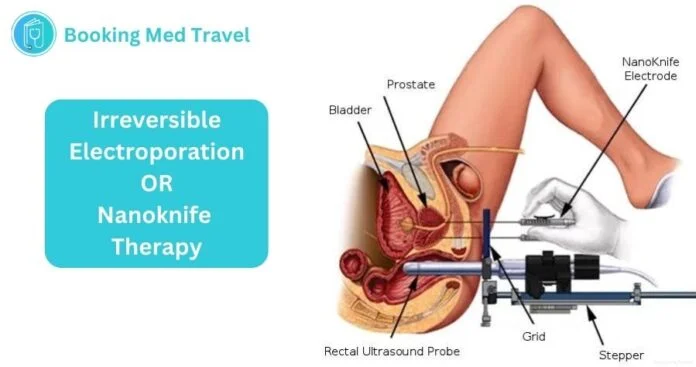Imagine a surgical tool that fights cancer like a tiny knight, wielding electricity instead of a sword to target and destroy enemy cells. That’s the basic idea behind nano knife surgery, a minimally invasive technique offering hope to patients with challenging tumors.
Why Choose Nano Knife Surgery?
Traditional cancer treatment options like surgery, radiation, and chemotherapy can be effective, but they often come with limitations. Surgery might not be feasible for all tumors, especially those in delicate locations. Radiation and chemo can damage healthy tissues alongside cancerous ones. This is where nano knife surgery steps in, offering several potential advantages:
Minimally invasive: Unlike traditional surgery, which involves larger incisions, nano knife surgery uses thin needles, minimizing scarring and recovery time.
Targeted approach: The electrical pulses precisely target cancer cells, sparing surrounding healthy tissues like nerves and blood vessels. This is especially beneficial for tumors close to vital organs.
Reduced side effects: Compared to traditional therapies, nano knife surgery usually has fewer side effects like nausea, fatigue, and pain.
Potential for cure: Studies suggest that nano knife surgery can be curative for certain types of cancer, meaning it can potentially eliminate the disease entirely.
Types of Nano Knife Surgery
There are two main types of nano knife surgery, depending on the location of the tumor:
Percutaneous: Performed through the skin, making it even less invasive. Suitable for tumors in easily accessible areas like the lungs and kidneys.
Laparoscopic: Uses laparoscopic techniques, which involve small incisions and long, thin tools inserted through them. Ideal for tumors in the abdomen and pelvis.
Benefits of Nano Knife Surgery
While not suitable for every case, nano knife surgery offers several potential benefits, making it a valuable tool in the fight against cancer:
Preserves organ function: By sparing healthy tissues, nano knife surgery can help preserve the function of vital organs, improving quality of life after treatment.
Faster recovery: Due to the minimally invasive nature, patients typically experience faster recovery times compared to traditional surgery.
Fewer complications: The targeted approach of nano knife surgery reduces the risk of complications associated with damaging healthy tissues.
Potential for repeat treatment: In some cases, nano knife surgery can be repeated if necessary, offering a valuable option for managing recurrent tumors.
Steps Involved in Nano Knife Surgery
Consultation and planning: This involves discussing your medical history, undergoing imaging tests to map the tumor, and determining if nano knife surgery is suitable.
Anesthesia: You will receive general anesthesia to ensure comfort and no pain during the procedure.
Probe placement: Thin needles called probes are inserted into your body under ultrasound guidance to reach the tumor.
Delivery of electrical pulses: Once the probes are in place, the surgeon will deliver short, high-voltage electrical pulses through them, targeting the cancer cells.
Monitoring and recovery: You will be closely monitored after the procedure, and depending on the complexity, you might need to stay in the hospital for a few days or go home for recovery.
Conclusion
Nano knife surgery is a promising advancement in cancer treatment, offering a minimally invasive and targeted approach with the potential to improve patient outcomes and quality of life. While not a universal solution, it can be a valuable option for patients with specific types of cancer, especially those with tumors in delicate locations or who are at higher risk for complications with traditional treatments.
FAQs
Is nano knife surgery right for me?
Discussing this with your doctor is crucial. They will consider your individual case, including the type and location of your tumor, overall health, and suitability for the procedure.
Are there any risks associated with nano knife surgery?
Like any surgery, nano knife surgery does carry some risks, such as bleeding, infection, and discomfort at the insertion site. However, these risks are generally lower compared to traditional surgery.
What is the success rate of nano knife surgery?
The success rate of nano knife surgery depends on various factors, including the type and stage of cancer, patient health, and other treatment options used. Your doctor can provide specific information based on your individual case.
Remember, nano knife surgery is not a one-size-fits-all solution, and talking to your doctor is essential to determine if it’s the right option for you.

